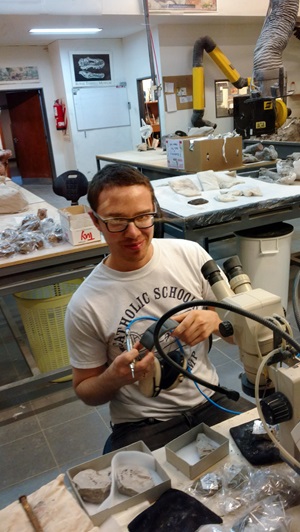August 12, 2019

Grant
$1,000 in spring 2014
Education level at the time of the grant
PhD student
Research Discipline
Paleontology/Sedimentation
How the funds were used
Donovan visited the fossil plant collection at the Museo Paleontológico Egidio Feruglio in Trelew, Argentina, to collect data for his research project.
Project objective and results
Donovan’s research team was testing a hypothesis that the Southern Hemisphere may have provided a refuge for life on Earth after an asteroid collision 66 million years ago that caused the last mass extinction. They examined fossilized leaves from Patagonia and the western United States dating from before and after the asteroid’s collision to look for evidence of insect feeding. The team found the diversity of insect damage on the Patagonia fossils returned to preextinction levels in 4 million years after the asteroid hit, while herbivorous insects in the western U.S. took 9 million years to do the same. Their results suggest that life on land in southern latitudes recovered much more quickly than in the western U.S.
How this project influenced him as a scientist
Donovan collaborated with international scientists and learned new analytical techniques. News media interviewed him after he published the research in Nature Ecology and Evolution, which helped him learn to communicate to a broader audience.
Where is he now?
Donovan earned his PhD and works as the senior collections manager of paleobotany and paleoecology at the Cleveland Museum of Natural History.
Photo caption
Michael Donovan’s Sigma Xi grant supported his trip to Argentina to collect data for his research project on fossilized leaves, which hold evidence of insect feeding after the last mass extinction. Here he is working in the fossil preparation laboratory at the Museo Paleontológico Egidio Feruglio. (Photo by Peter Wilf.)